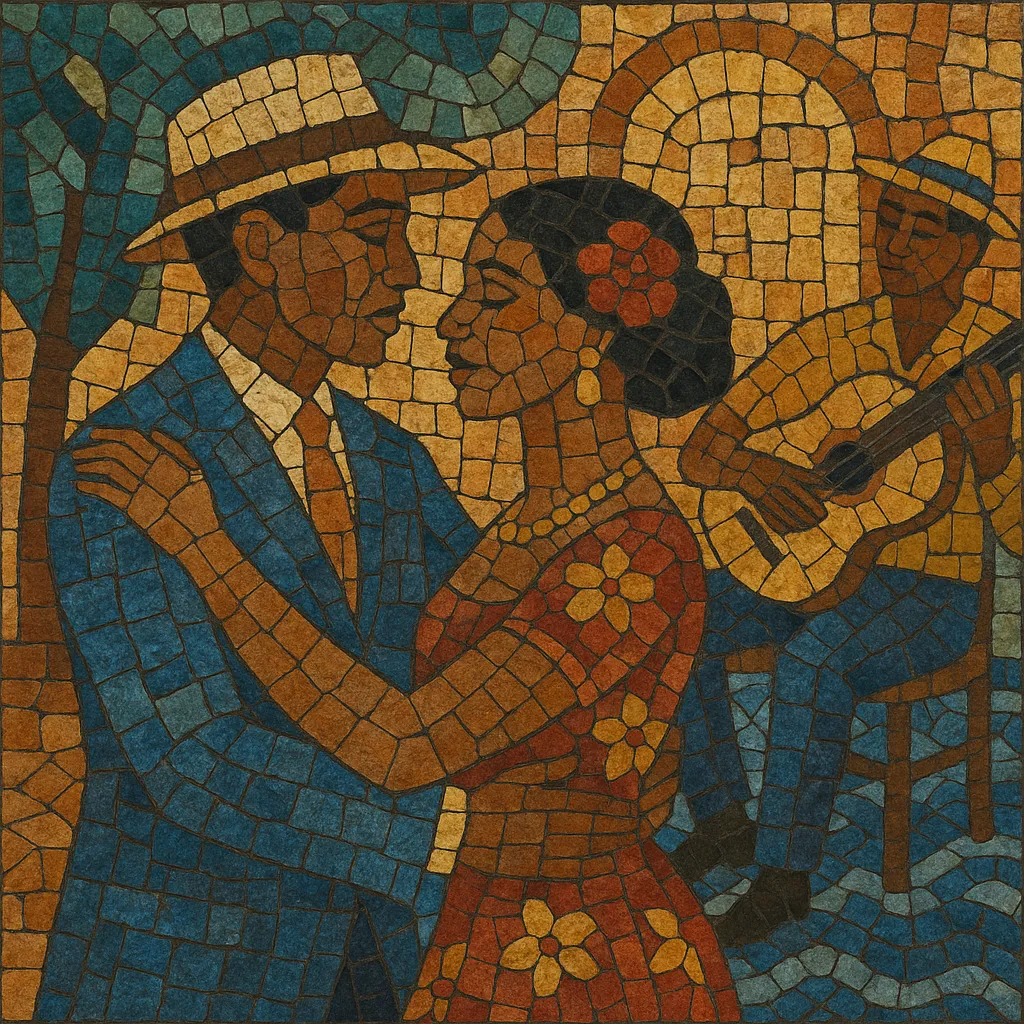Maxixe (pronounced ma-SHEE-shee) is a Brazilian urban dance-music style that crystallized in Rio de Janeiro at the end of the 19th century. Often nicknamed the "Brazilian tango," it blends Afro-Brazilian rhythmic drive with European ballroom forms.
Typically notated in 2/4 and propelled by a syncopated habanera/tresillo feel, maxixe favors bright tempos, off‑beat accents, and elegant yet playful melodies. It thrived in salons, theatrical revues, wind bands, choro ensembles, and on solo piano, where left‑hand habanera patterns support harmonically mobile, ornamented tunes. The style was once considered risqué, but it became a fashionable symbol of modern Brazilian cosmopolitan life in the early 20th century, spreading to Europe and the United States.
Maxixe emerged in Rio de Janeiro’s dance halls and street culture in the late 1800s, when musicians and dancers fused Afro‑Brazilian practices (batuque and lundu) with European couple dances (polka and schottische), salon repertoire, and the habanera/tango pulse. Early choro musicians and wind-band leaders helped codify its syncopated 2/4 feel and lively phrasing, while pianists adapted it to virtuosic salon pieces.
By the 1890s–1900s, maxixe had a recognizable sound and social presence. Composers such as Chiquinha Gonzaga and Ernesto Nazareth published widely circulated piano maxixes (“Corta‑Jaca,” “Brejeiro,” “Odeon”), and bands performed them in cafés, theatres, and carnival festivities. The dance’s sensual close embrace and rhythmic swing made it both wildly popular and controversial.
Around the 1910s, the dancer Duque popularized the maxixe in Europe (often billed as “tango‑maxixe”), and touring Brazilian ensembles brought the style abroad. In 1914, First Lady Nair de Teffé’s performance of Gonzaga’s “Corta‑Jaca” at the presidential palace symbolically moved maxixe from “popular” to “national” culture. Recordings and sheet music further cemented its vogue.
From the 1920s onward, samba’s rise—along with evolving ballroom fashions—gradually eclipsed maxixe as a social dance. Yet its rhythmic language, melodic syntax, and harmonic motion left a deep imprint on Brazilian music, feeding into choro practice, samba variants (especially samba de gafieira), carnival marchinhas, and the development of frevo in Recife. Today, maxixe is preserved in historical recordings, piano literature, choro repertoires, and vintage dance scenes.


